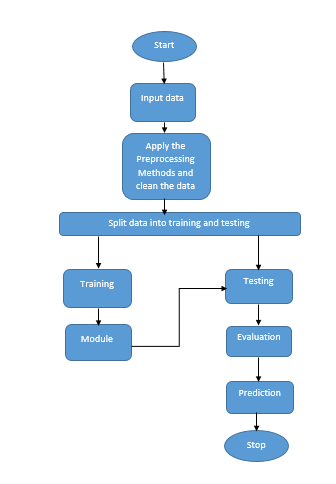Wine Quality Prediction
Objective
The objective of this study is to compare and evaluate the performance of six different algorithms, namely Ridge regression, Artificial Neural Networks (ANN), Gradient Boosting Regression, Random Forest, Stochastic Gradient Descent (SGD), and Logistic Regression, for the task of wine quality prediction. The study aims to determine which algorithm yields the most accurate and reliable predictions to assist in enhancing wine quality assessment and decision-making processes.
Abstract
To predict wine quality using six different algorithms: Ridge Regression, Artificial Neural Networks (ANN), Gradient Boosting Regression, Random Forest, Stochastic Gradient Descent (SGD), and Logistic Regression. The dataset consists of various chemical properties of wines and their corresponding quality ratings. Each algorithm is implemented and evaluated to determine its performance in predicting the wine quality. First, Ridge Regression is employed to analyze the dataset and regularize the coefficients, aiming to mitigate potential multicollinearity issues. Secondly, an ANN model is constructed with multiple layers to capture complex relationships between the input features and the target variable. Thirdly, Gradient Boosting Regression is applied to sequentially improve the predictive accuracy by combining weak learners. Fourthly, a Random Forest model is utilized to create an ensemble of decision trees, offering robustness against overfitting. Fifthly, the Stochastic Gradient Descent approach is implemented for efficient optimization during the training process. Lastly, Logistic Regression is employed as a binary classification algorithm to predict high and low-quality wines. The results are compared and analyzed to identify the most suitable algorithm for wine quality prediction. The findings will assist winemakers and experts in making informed decisions to enhance wine quality and improve production processes.
Key words: Ridge regression, ANN, Gradient boosting regression, Random forest, SGD and logistic regression.
NOTE: Without the concern of our team, please don't submit to the college. This Abstract varies based on student requirements.
Block Diagram

Specifications
H/W CONFIGURATION:
• Processor - I7/Intel Processor
• Hard Disk -160GB
• Key Board - Standard Windows Keyboard
• Mouse - Two or Three Button Mouse
• RAM - 8Gb
S/W CONFIGURATION:
• Operating System : Windows 11
• Server side Script : Python, HTML, MYSQL, CSS, Bootstrap.
• Libraries : PANDAS, Django
• IDE : PyCharm (or) VS code
• Technology : Python 3.10






 Paper Publishing
Paper Publishing
